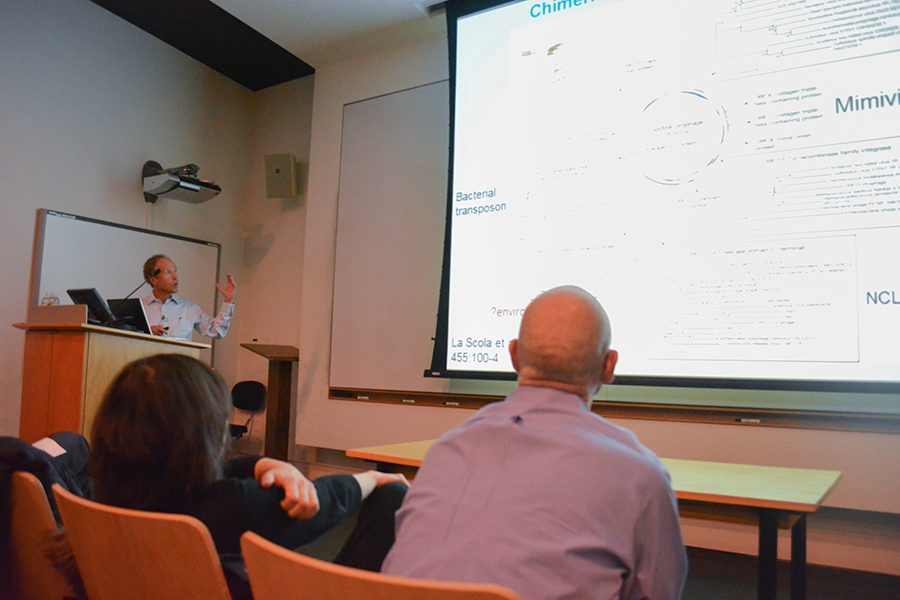Darwin lecture looks at evolution of viruses
Eugene Koonin talks on Darwin day about the evolution and evolutionary impact of viruses on larger organisms.
February 18, 2015
This year’s annual Darwin lecture covered advancements in the field of viral evolutionary biology on Friday. NYU’s biology department hosted the event, and Dr. Eugene Koonin, an award-winning biologist and senior investigator at the National Center for Biotechnology Information, spoke about his research.
Koonin examined viruses as a source of infinite genetic diversity and the classification of giant viruses within the three known domains of life. He also researched the genetic and epigenetic factors as the cause of viral genome evolutions — the DNA or RNA of viruses responding to changes in environment. Moreover, the formation of giant viruses due to a result of massive gene gain was one of the integral aspects of viral genome evolution discussed during the lecture.
Koonin strongly believed that research in genome evolution was a result of rapid development in genome sequencing technologies to more efficiently determine the order of nucleotides within the genomes of viruses.
“The new era of sequencing really opens up possibilities,” Koonin said. “I can now talk about things that I could only dream about a few years ago. We may not know everything but we know enough to extrapolate a realistic picture of the existing diversity.”
Koonin pointed out the previous limitations in technology when only analysis and sequencing of very small viral genomes were possible.
“This was incidentally in the early ’80s, when there wasn’t much genomics,” Koonin said. “We were very interested in the possibility to compare, for the first time in history, complete genomes of life forms.”
The task of analyzing viral genomes and making comparisons of these genomes proved to be difficult at times for Koonin and his team.
“Genomes of viruses and other cellular elements tend to evolve very fast, so detecting evolutionary change in viruses is a serious technical challenge,” Koonin said.
Koonin’s work has sparked various innovations in biology. A paper soon to be published in the science magazine Nature discusses genetic engineering in vivo using live mice. This ability to conduct genetic engineering in multicellular living organisms is attributed to Koonin’s research.
“What we’re doing is fundamental research, we’re originally not working on applications,” Koonin said. “However, many things have their practical side and its part of all the work we do.”
CAS freshman Danielle Mercadona was appreciative of Koonin’s approach to elucidate simple genomes of primitive biological entities in order to understand evolution.
“The lecture was very insightful on the various ways in which simple genomes of viruses have evolved,” Mercadona said. “I believe we can only understand evolution of complex genomes if we try to understand the simpler ones first.”
A version of this article appeared in the Thursday, Feb. 19 print edition. Email Dhriti Tandon at [email protected].
























































































































































